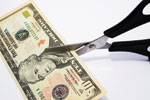Blog
Know your prices so you’ll be able to measure the advance whilst you lower them
Know your costs so you can measure the improvement when you cut them

the cost of changeover is something every company can do.
The economy is in the tank and, if they are buying at all,
your customers are looking for bargains. If you didn’t feel the heat to cut
costs before, you certainly should now. Changeover costs can offer a
significant opportunity in almost every company.
How much can you save via reduced changeover times? That’s a
question I ask all the time, but fewer than 15% to 20% of companies can answer
it. Companies that do know tell me that it is hardly insignificant. The lowest
number I’ve seen, from a pharmaceutical packager, is $13,500 an hour. A
distilled spirits bottler calculates it at more than $32,000 an hour. Other
companies in a variety of packaging markets calculate costs in a similar range.
Changeover costs come in two flavors: tangible and
intangible. Tangible costs are those which are measurable and whose dollar
value can be calculated. Intangible costs may be even more expensive but, by
their nature, are difficult or impossible to quantify.
Tangible costs
The biggest tangible cost for most manufacturers will be
lost production. If your line runs at 200 products per minute, every minute it
is down represents 200 products that you will not sell or earn profits on.
A related cost is lost capacity. If you are selling all you
can make, but are losing 10% to 20% of your available time to changeover,
reducing changeover provides additional capacity without the expense of new
construction, machinery, people and inventory.
Inventory levels are another factor. Some plants will try to
minimize the impact of changeover via longer production runs. While this
reduces the number of changeovers, it does so at the expense of increasing
inventories. At a typical annual carrying cost of 30%, the focus needs to be on
reducing, not increasing, inventory.
Better quality changeovers will lead to increased
performance. Increased efficiency goes straight to the bottom line.
Intangible costs
The biggest intangible cost is usually reduced
responsiveness to your customers. They don’t want to hear that you can’t
satisfy a need this week because you are running something else. The ability to
flexibly shift production as needed will help keep a customer from going
elsewhere.
A plant stressed by lengthy changeovers, fighting just to
get product out the door, can forget that the lack of innovation results in
stagnation and decline. Relieving the stress by getting changeover times under
control will foster both innovative ideas and the opportunity to try them out.
This creates a virtuous cycle where each innovation inspires further
innovation.
These examples are illustrative, not comprehensive. Every
company will have different models and factors for determining changeover’s
cost. The point is that there are significant costs to changeover and they must
be known. It is only by knowing costs that management can make intelligent
decisions. Flying blind on this significant operating cost will lead to bad
decisions. In other words:
Know your costs and you will do something about them!

